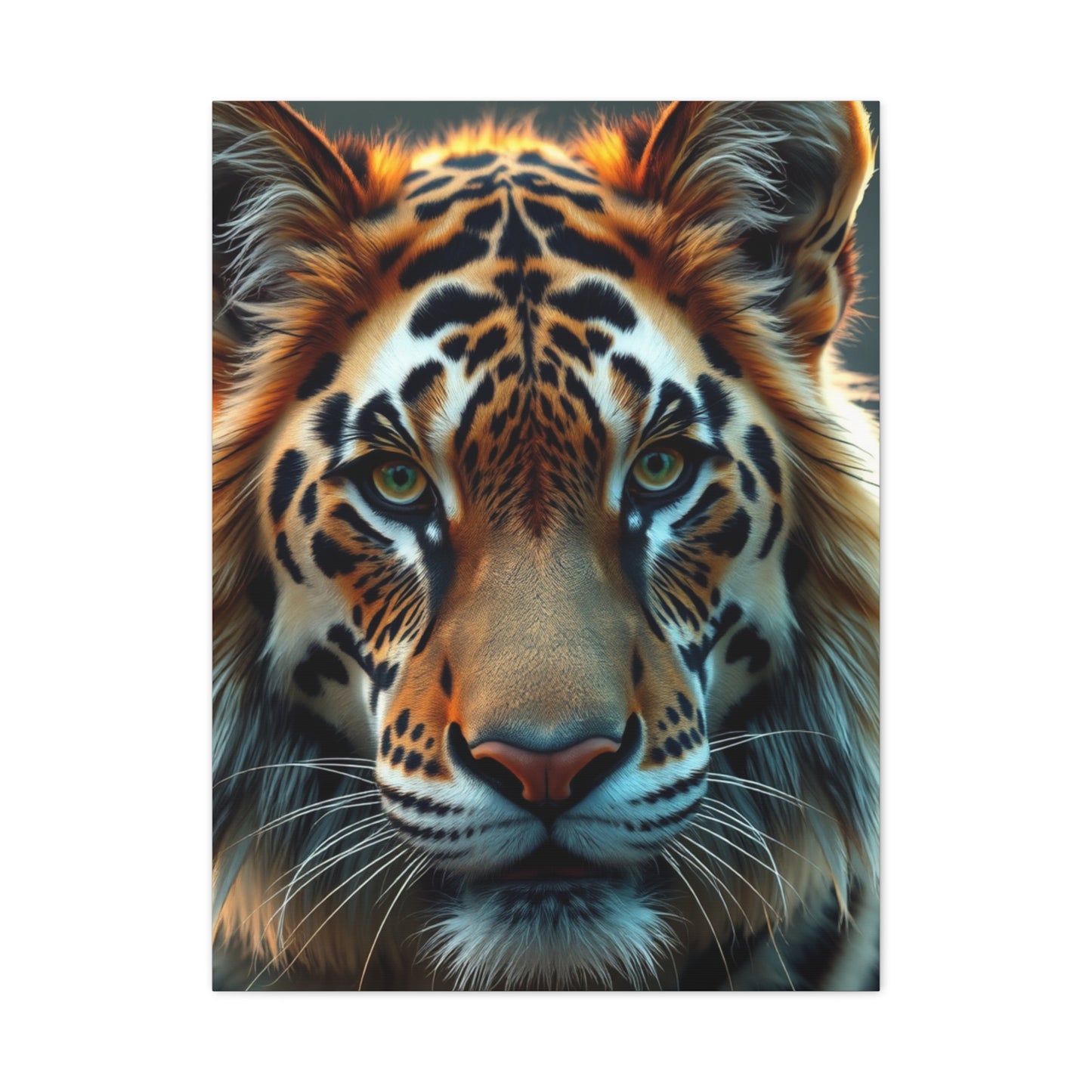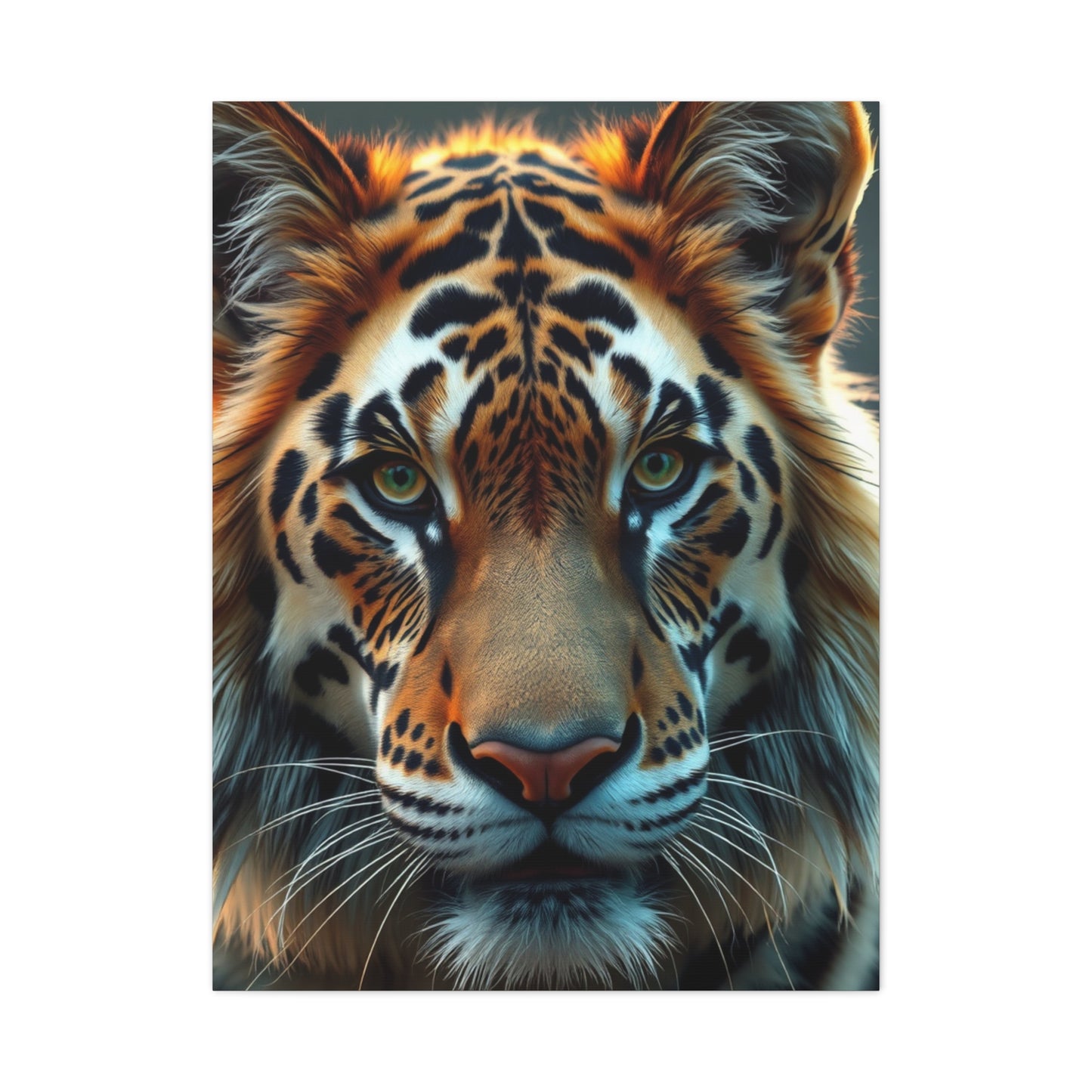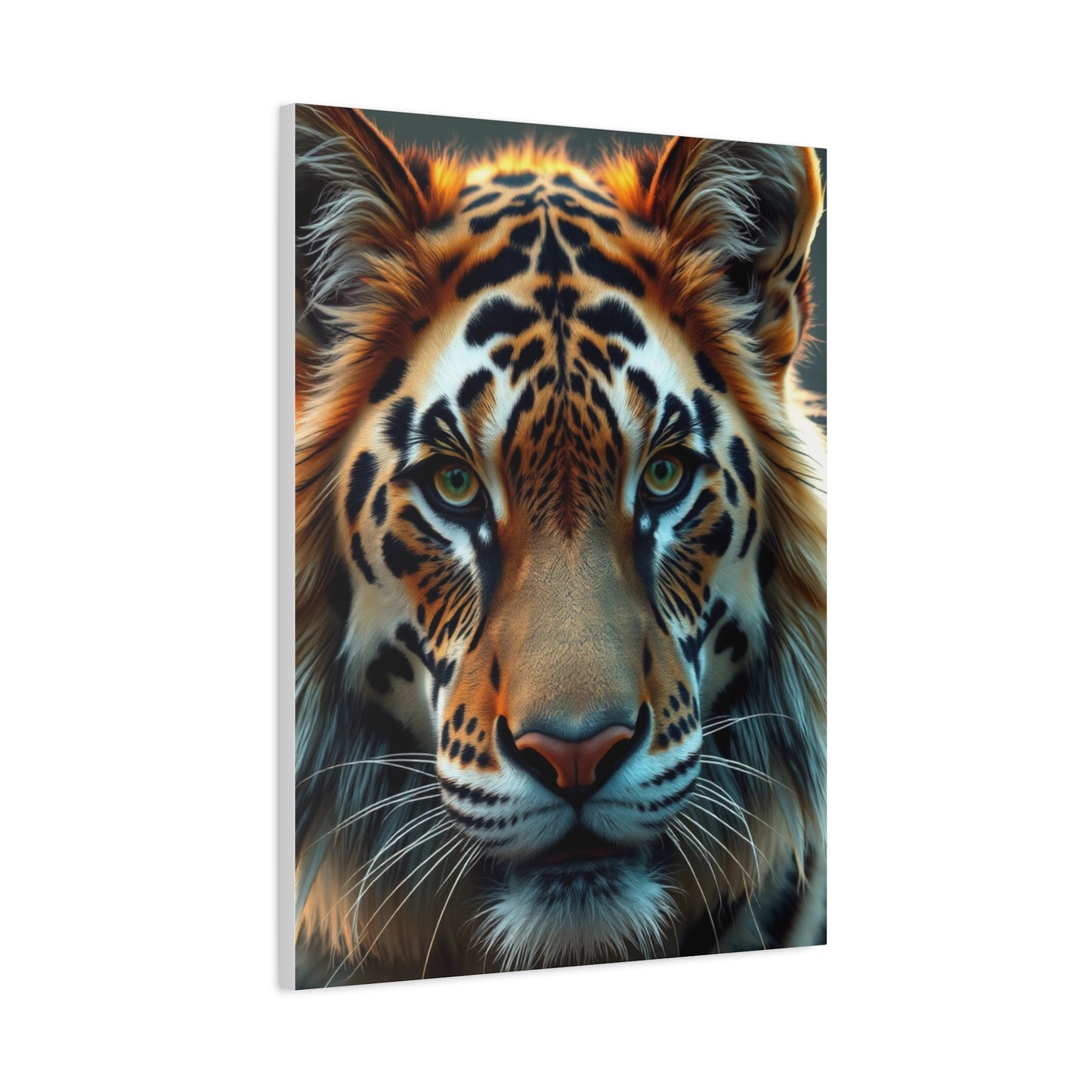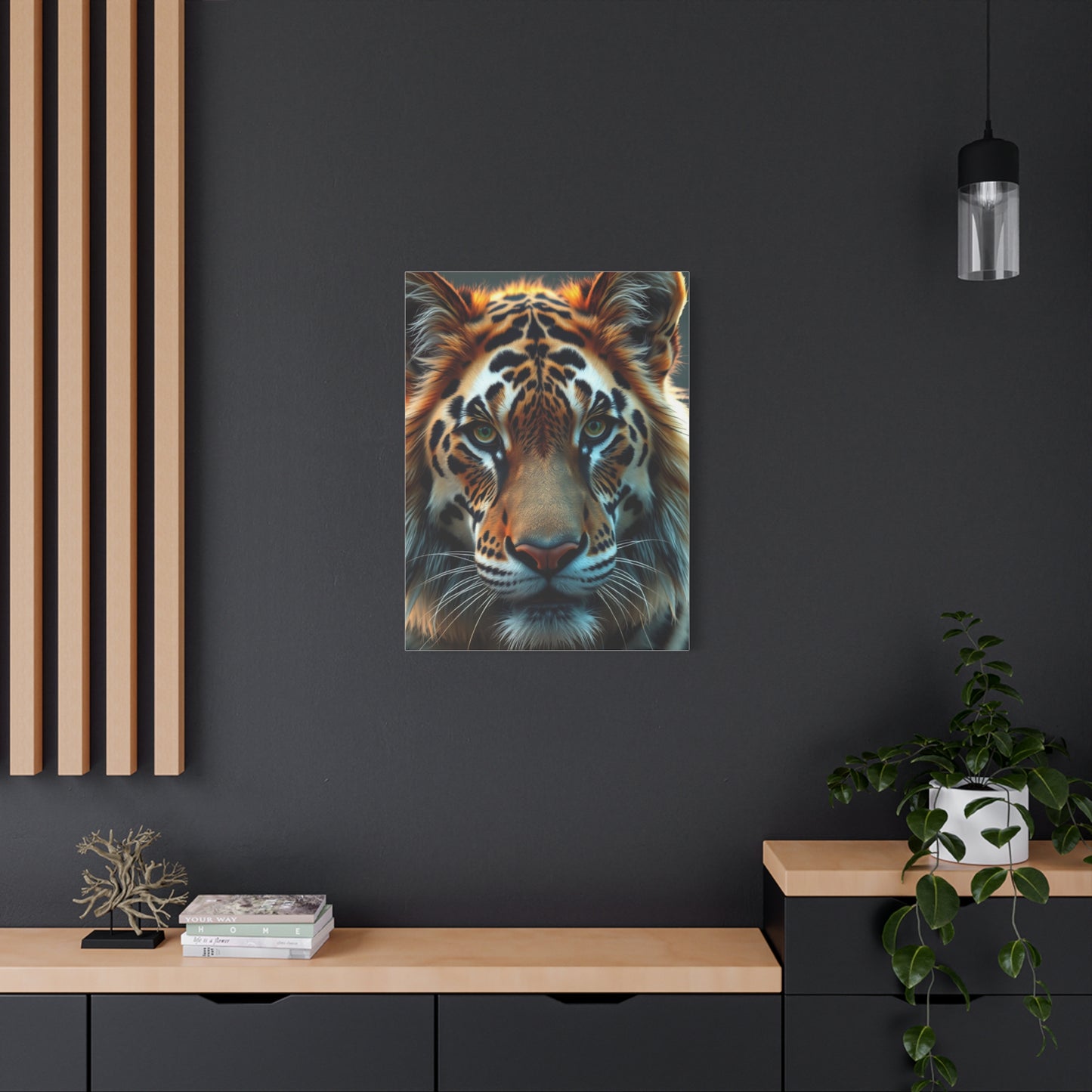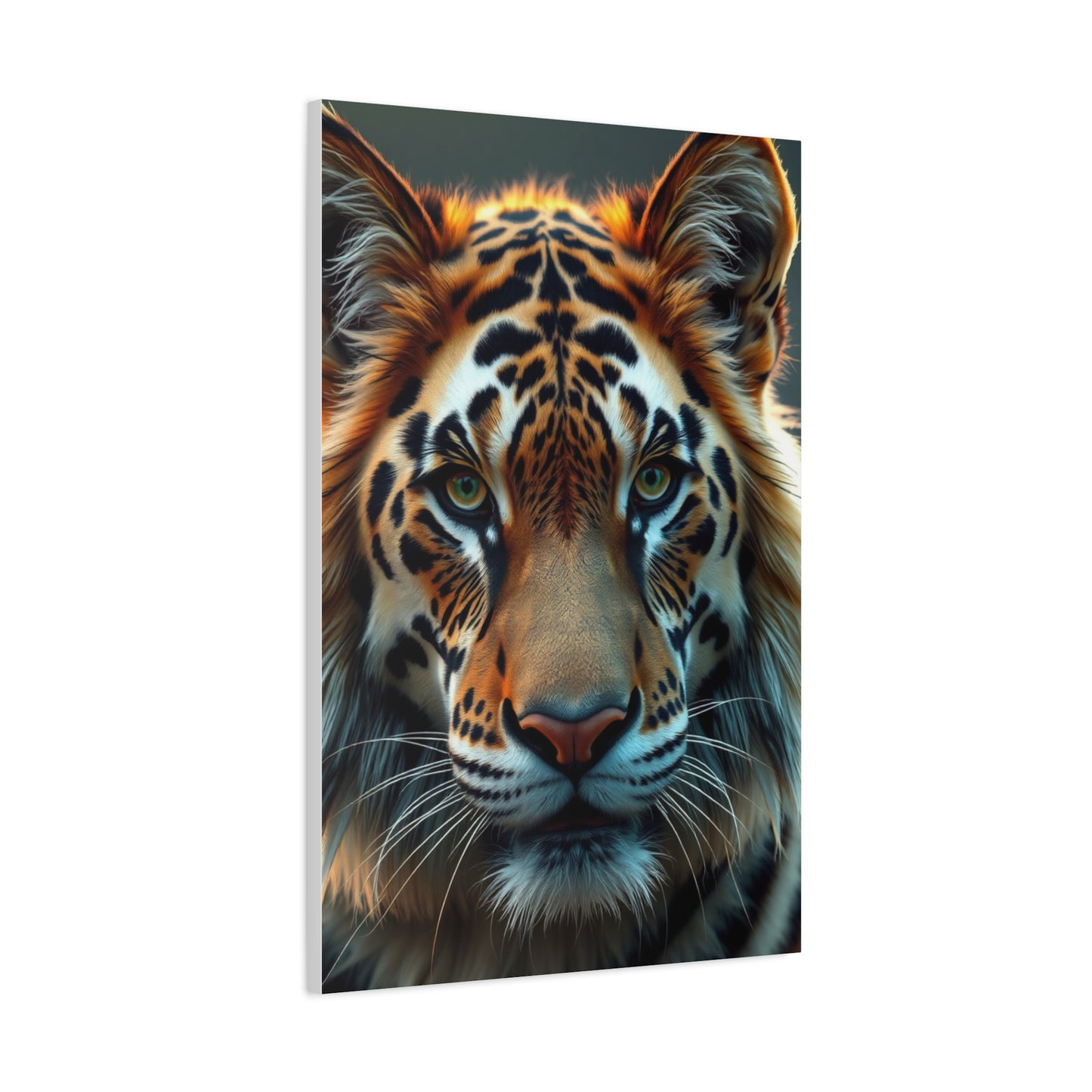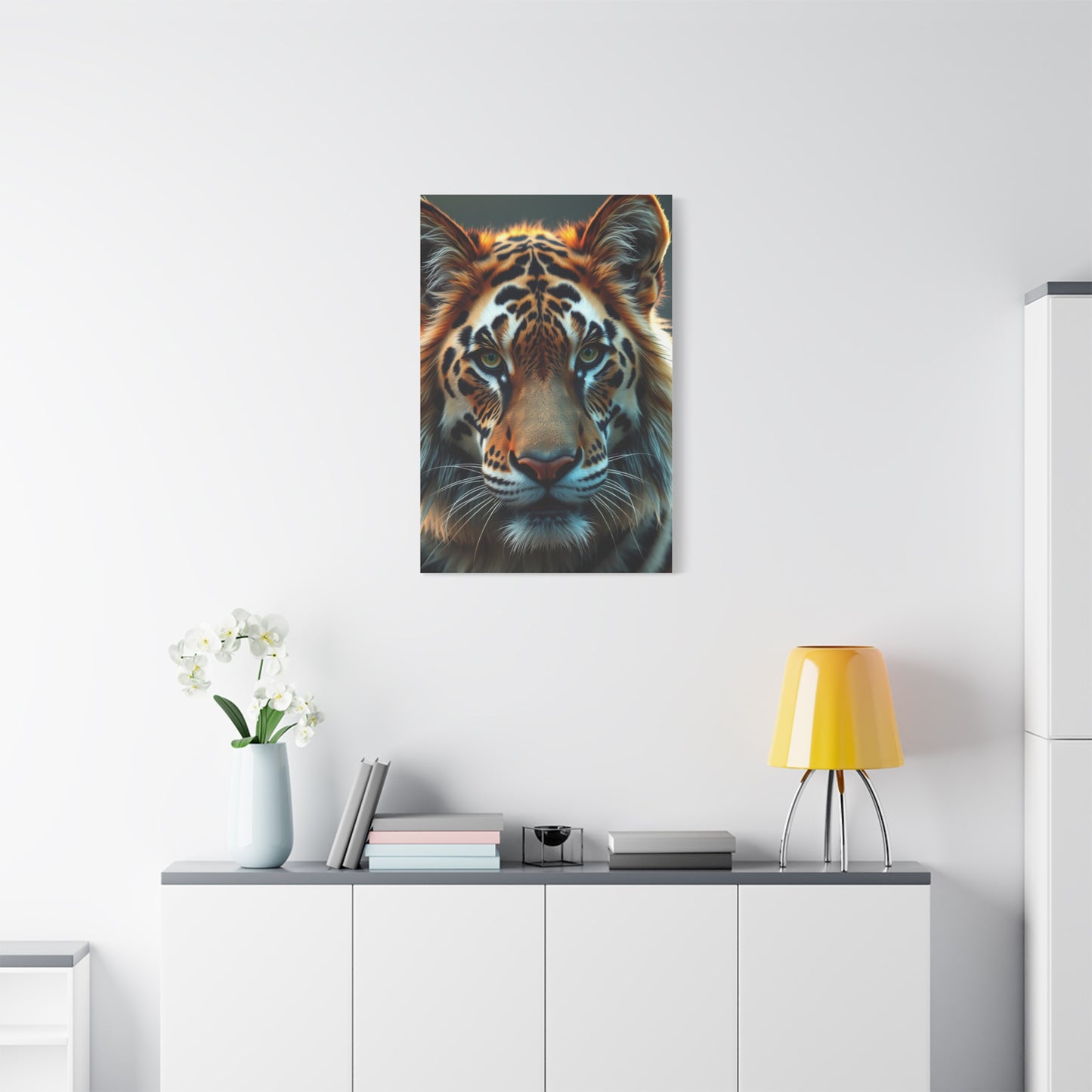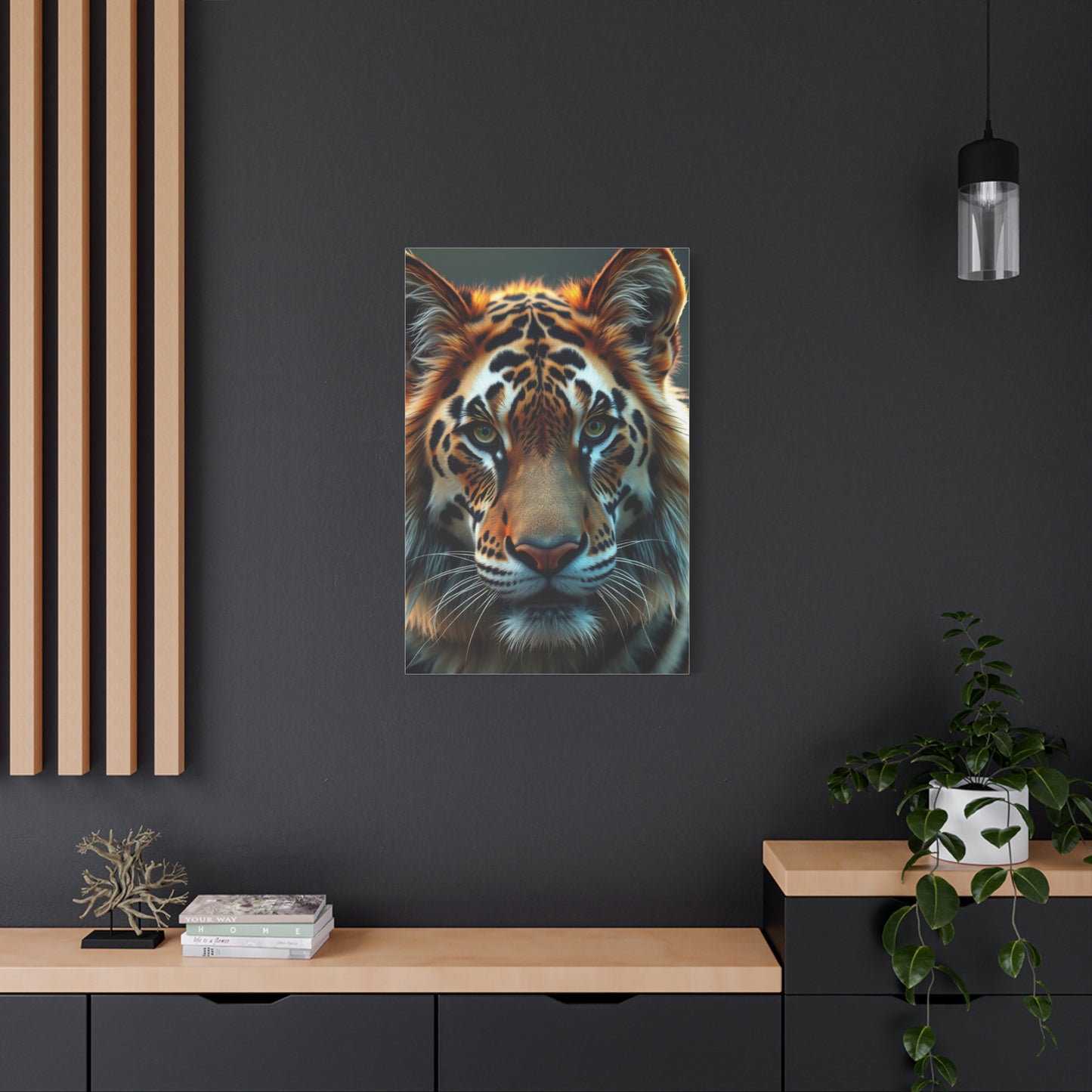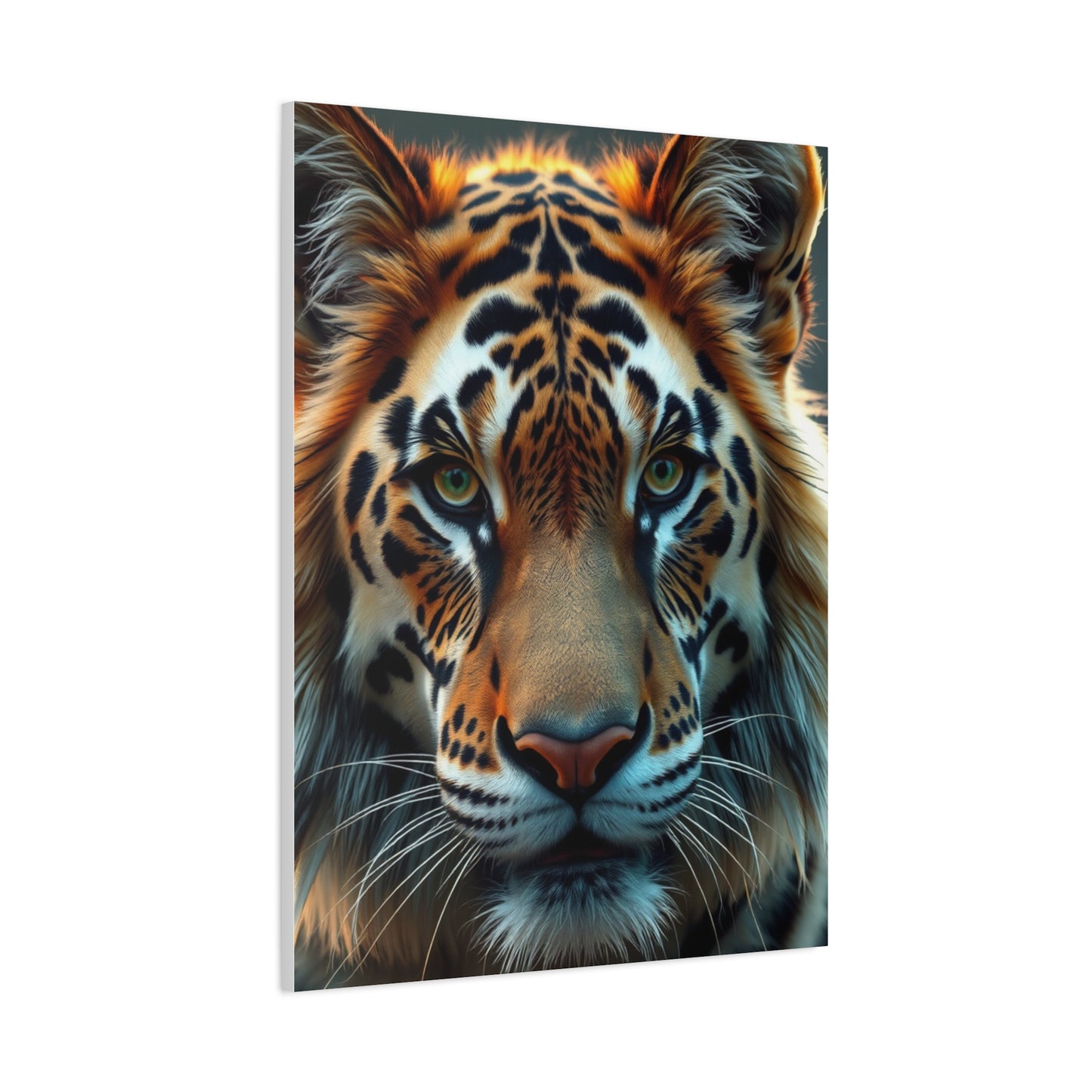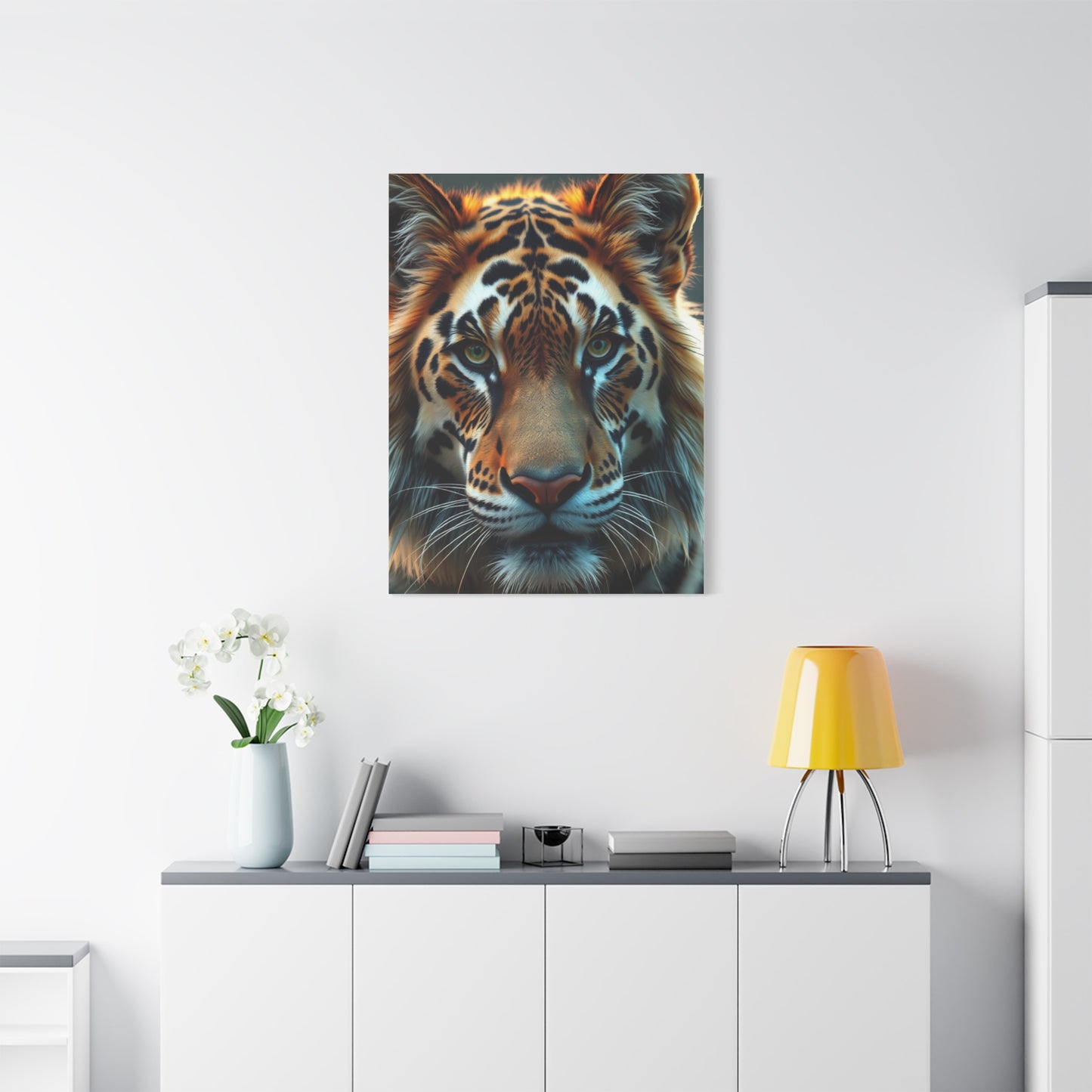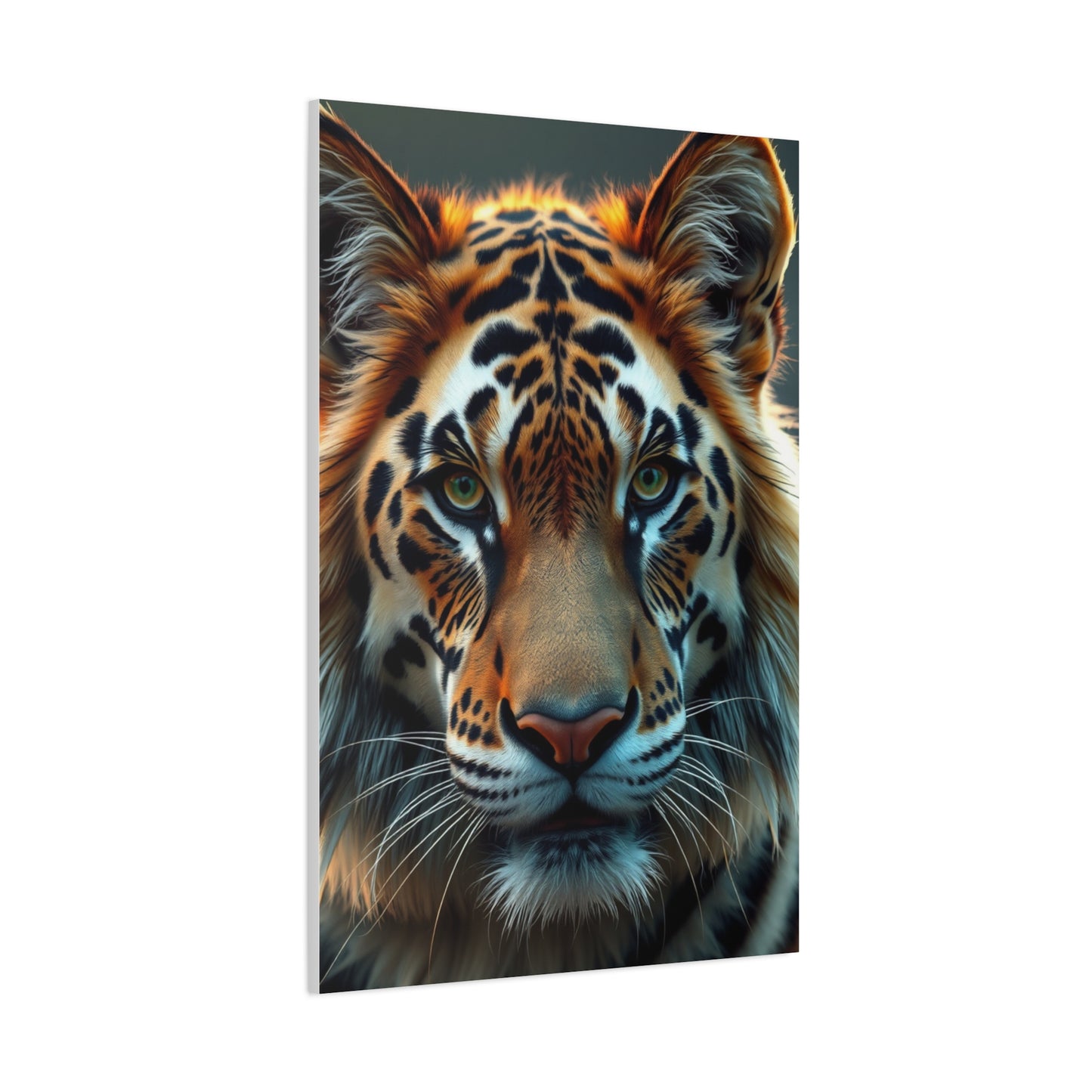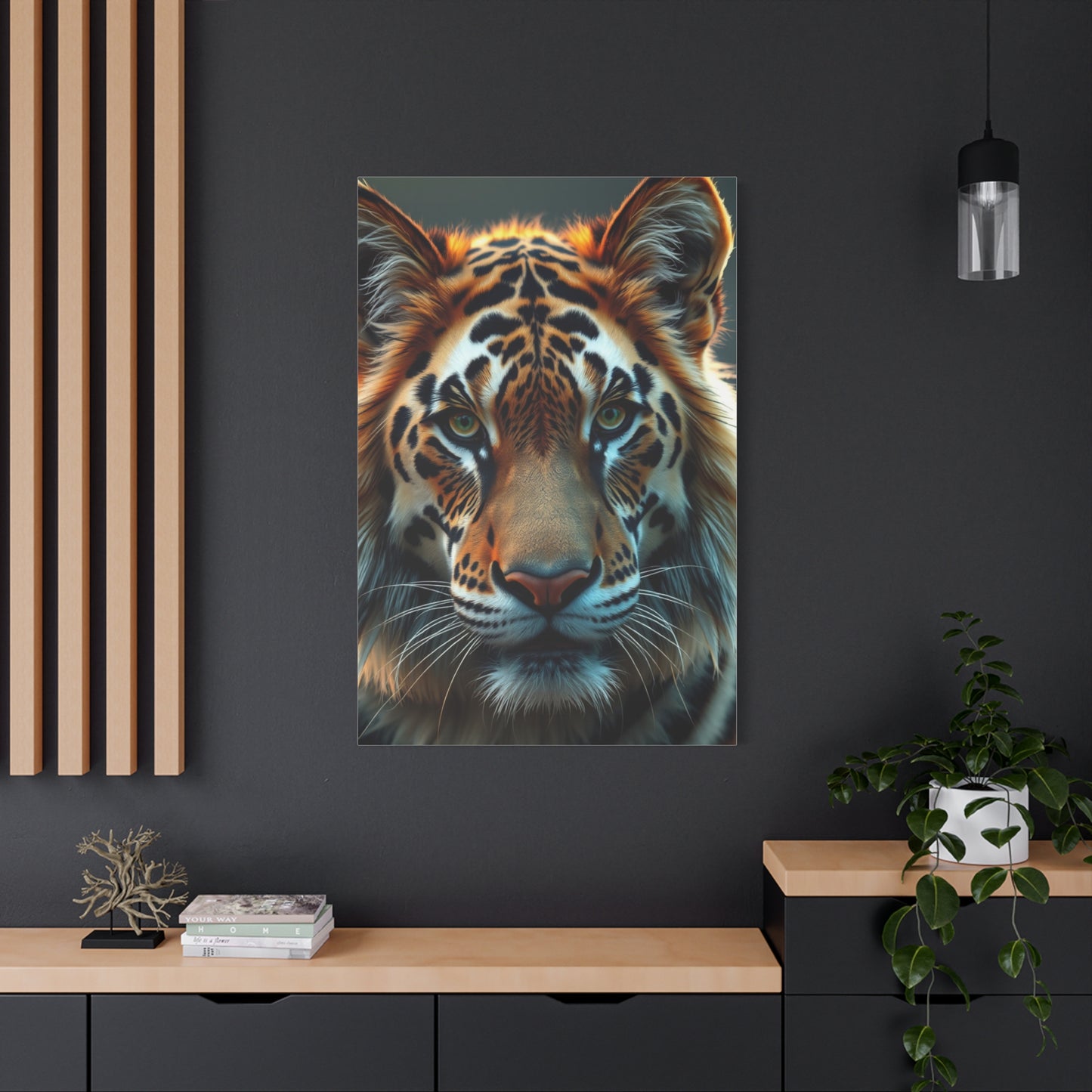Bringing Nature's Majesty Into Your Living Space Through Ethereal Wildlife Elegance Wall Art
The world of interior design has witnessed a remarkable shift toward incorporating natural elements that speak to our primal connection with the animal kingdom. Ethereal wildlife elegance wall art represents a sophisticated approach to bringing the untamed beauty of nature into modern living spaces. This artistic movement captures the grace, power, and mystique of wild creatures through delicate brushstrokes, soft color palettes, and dreamlike compositions that transform ordinary walls into portals of natural wonder.
When you invest in animal-themed artwork for your home, you're not simply purchasing decoration. You're inviting the spirit of wilderness, the whisper of forests, and the majesty of creatures that roam free across continents into your personal sanctuary. Each piece tells a story of survival, beauty, and the delicate balance of ecosystems that sustain life on our planet. The ethereal quality of these artworks distinguishes them from traditional wildlife paintings by emphasizing atmosphere, emotion, and a almost otherworldly representation of animals in their natural habitats.
The popularity of such decorative pieces has surged among homeowners, interior designers, and art collectors who seek to create spaces that reflect both sophistication and a deep appreciation for the natural world. These artworks serve multiple purposes: they act as conversation starters, focal points in room design, and daily reminders of the incredible diversity of life that exists beyond our urban environments. The elegance inherent in these pieces makes them suitable for various interior styles, from contemporary minimalism to rustic farmhouse aesthetics.
What makes this particular style of animal artwork so compelling is its ability to evoke emotion without overwhelming a space. The ethereal approach softens the potentially intimidating aspects of wildlife imagery, making creatures like bears, wolves, and eagles appear both powerful and approachable. This balance appeals to a wide range of tastes and sensibilities, allowing people to connect with nature's majesty in a way that feels personal and meaningful.
The Rising Popularity of Animal-Themed Interior Design
Interior design trends continuously evolve, but the incorporation of animal motifs has proven to be more than a passing fad. The rising popularity of wildlife-inspired decor reflects a broader cultural movement toward environmental consciousness and biophilic design principles. People are increasingly seeking ways to reconnect with nature, especially as urban living distances us from wild spaces. Bringing animal imagery into our homes serves as a bridge between our modern lifestyles and our ancestral connection to the natural world.
Contemporary homes often feature clean lines, neutral color schemes, and minimalist furnishings that can sometimes feel sterile or impersonal. Animal artwork introduces warmth, character, and a sense of life into these spaces. A carefully selected piece featuring a majestic elk, a soaring eagle, or a prowling wolf can completely transform the energy of a room, making it feel more inviting and grounded. The emotional resonance of these images taps into something fundamental in human psychology, our innate affinity for other living creatures and the environments they inhabit.
The appeal of animal-themed decor extends across demographic groups and geographical locations. Coastal homes might feature marine life, while mountain residences often showcase images of bears, deer, and alpine birds. Urban apartments benefit from the contrast that wildlife imagery provides, offering a visual escape from concrete and steel. This versatility has contributed significantly to the sustained popularity of animal artwork in interior design circles.
Social media platforms have amplified this trend, with interior design enthusiasts sharing images of beautifully decorated spaces that incorporate wildlife elements. These visual inspirations reach millions of viewers, influencing purchasing decisions and design preferences on a global scale. The hashtag culture surrounding home decor has created communities of people who specifically seek out and celebrate animal-inspired aesthetics, further driving demand for high-quality wildlife artwork.
Beyond aesthetics, there's a deeper psychological component to this trend. Studies in environmental psychology suggest that exposure to nature imagery, including pictures of animals, can reduce stress, improve mood, and even enhance cognitive function. In an era marked by high stress levels and digital overload, having visual reminders of the natural world in our living spaces may serve important wellness functions that we're only beginning to understand fully.
Selecting the Perfect Wildlife Artwork for Your Home
Choosing the right wildlife artwork for your living space involves more than simply picking an image you find attractive. The process requires consideration of multiple factors including room size, existing decor, color schemes, and the emotional atmosphere you wish to create. The perfect piece should complement your space while adding a distinctive element that reflects your personal connection to nature and your aesthetic preferences.
Start by assessing the wall space where you plan to hang your artwork. Large, open walls in living rooms or above sofas can accommodate substantial pieces that make bold statements. These spaces allow for dramatic wildlife portraits featuring animals in their full majesty, whether a bear standing at full height, an eagle with wings spread wide, or a wolf pack traversing a snowy landscape. Smaller spaces like hallways, bedrooms, or home offices might benefit from more intimate compositions that invite closer viewing and contemplation.
Consider the existing color palette in your room when selecting artwork. Ethereal wildlife pieces often feature soft, muted tones that blend harmoniously with neutral decor schemes. If your space incorporates earthy browns, forest greens, or stone grays, wildlife artwork with similar undertones will create a cohesive look. Alternatively, you might choose a piece that introduces complementary colors to add visual interest without clashing with your established design.
The mood you want to establish plays a crucial role in artwork selection. Different animals evoke different emotional responses. Deer and rabbits suggest gentleness and tranquility, making them ideal for bedrooms or meditation spaces. Predators like wolves, bears, and big cats convey strength, courage, and wild freedom, qualities that might energize a home office or living area. Birds, particularly those in flight, symbolize aspiration and limitless possibility, making them wonderful additions to creative workspaces.
Think about the style of the artwork in relation to your overall interior design approach. If your home features modern, clean-lined furniture, look for wildlife art with contemporary interpretations, perhaps with abstract elements or minimalist backgrounds. Traditional or rustic interiors pair beautifully with more realistic renderings that honor classical wildlife painting techniques. The ethereal style bridges these extremes, offering a versatile option that works across various design aesthetics.
Quality matters significantly when investing in wall art. Examine the printing quality, canvas or paper material, and framing options before making a purchase. High-quality reproductions on premium materials will maintain their appearance for years, while inferior products may fade, warp, or show defects over time. Consider whether you want a ready-to-hang canvas, a framed print, or an unframed piece that you can have professionally framed to your specifications.
Personal connection should ultimately guide your decision. Choose animals that resonate with you on a personal level, whether because of childhood memories, meaningful encounters in nature, or symbolic significance in your life journey. Artwork that speaks to you personally will bring more joy and meaning to your space than pieces selected purely for their design compatibility. Your home should reflect your unique story and values, and the wildlife art you display contributes to that personal narrative.
Different Types of Wildlife Subjects and Their Symbolic Meanings
The animal kingdom offers an incredibly diverse array of subjects for artistic representation, each carrying its own symbolic weight and cultural significance. When selecting ethereal wildlife elegance wall art, understanding the meanings associated with different creatures can help you choose pieces that align with your personal values and the energy you want to bring into your space.
Wolves have long captivated human imagination, representing loyalty, family bonds, and the balance between independence and community. In many cultures, wolves symbolize instinct, intelligence, and the guardian spirit. A wolf portrait in your home might reflect your own fierce independence or your commitment to family and chosen communities. The ethereal rendering of wolves, with their penetrating gaze softened by misty backgrounds and gentle lighting, captures both their power and their mysterious nobility.
Bears embody strength, courage, and introspection. These powerful creatures hibernate through winter, emerging renewed in spring, making them symbols of transformation and the cycles of life. Native American traditions often associate bears with healing and medicine, while other cultures see them as protectors of the forest. Bear artwork can inspire confidence and remind us of our own inner strength during challenging times. The juxtaposition of a bear's massive physical presence with an ethereal artistic treatment creates a compelling balance between power and gentleness.
Eagles and other raptors represent vision, freedom, and spiritual connection. As creatures of the sky, they've been associated with divine perspective and the ability to see the bigger picture in life. Eagle imagery often inspires us to rise above limitations and view our circumstances from a higher vantage point. In ethereal wildlife art, eagles captured mid-flight or perched majestically on mountain peaks embody aspirational qualities that can motivate and uplift anyone who views them regularly.
Deer symbolize gentleness, grace, and sensitivity. In various traditions, deer represent the ability to move through life's challenges with elegance and without causing harm. They remind us to approach situations with compassion and awareness. Stag imagery, with their impressive antlers, adds elements of nobility and masculine energy, while doe portraits emphasize nurturing and feminine qualities. The ethereal treatment of deer creates artwork that feels peaceful and meditative, perfect for spaces dedicated to rest and reflection.
Foxes have gained popularity in recent years as symbols of cleverness, adaptability, and playfulness. These intelligent creatures navigate both wild and urban environments with remarkable success, making them emblems of resourcefulness. Fox artwork appeals to those who value wit, strategic thinking, and the ability to thrive in changing circumstances. The ethereal style beautifully captures the fox's almost magical quality, their rust-colored fur seeming to glow against soft, dreamy backgrounds.
Mountain lions and other big cats represent confidence, leadership, and the courage to walk alone when necessary. These solitary hunters embody focused determination and the power of patience. Artwork featuring these magnificent predators can inspire viewers to trust their own judgment and move forward boldly in pursuit of their goals. The ethereal interpretation of big cats often emphasizes their fluid grace and the intensity of their gaze while softening their predatory edge.
Owls have been associated with wisdom, intuition, and the ability to see what others miss. As nocturnal creatures, they navigate darkness with ease, symbolizing guidance through uncertain times and the revelation of hidden truths. Owl artwork creates a contemplative atmosphere, encouraging deeper thinking and awareness. The large, penetrating eyes of owls become particularly striking in ethereal renderings, seeming to look directly into the soul of the viewer.
Horses symbolize freedom, power, and the untamed spirit. Wild horses running across open plains represent liberation from constraints and the joy of unrestricted movement. Domesticated horses also carry meanings of partnership, loyalty, and the relationship between humans and animals. Horse artwork can energize a space with dynamic movement or bring tranquility through images of horses at rest in pastoral settings.
Color Schemes That Complement Wildlife Artwork
The color palette of your ethereal wildlife elegance wall art plays a crucial role in how well it integrates with your existing interior design. These pieces typically feature softer, more muted color schemes that distinguish them from vibrant, high-contrast wildlife photography. The ethereal quality comes largely from the subtle blending of tones and the atmospheric use of color that creates depth and mood.
Earth tones form the foundation of most wildlife artwork, naturally reflecting the environments where these creatures live. Rich browns ranging from deep chocolate to soft taupe mirror forest floors, tree bark, and the fur of many animals. These warm neutrals create a sense of groundedness and stability in a space, making rooms feel more comfortable and inviting. When artwork features predominantly brown tones, it pairs beautifully with wooden furniture, leather accents, and natural fiber textiles like jute or linen.
Forest greens bring the vitality of living plants and wilderness into interior spaces. From deep hunter green to soft sage, these hues evoke the lushness of foliage and the tranquility of wooded landscapes. Green has psychological associations with growth, renewal, and harmony, making it an excellent choice for spaces where you want to promote relaxation and balance. Wildlife artwork with green undertones works exceptionally well in rooms with natural wood elements and indoor plants, creating a cohesive nature-inspired aesthetic.
Slate grays and charcoal tones add sophistication and drama to wildlife artwork. These cooler colors often represent misty mornings, storm clouds, or the rocky terrain of mountain environments. Gray-toned artwork has the advantage of being highly versatile, complementing virtually any color scheme from warm to cool. The neutral quality of gray allows the animal subject to take center stage while providing atmospheric depth that enhances the ethereal quality of the piece.
Soft blues appear frequently in ethereal wildlife art, representing sky, water, and the cool light of dawn or dusk. Blue carries psychological associations with calmness, clarity, and contemplation. Artwork featuring blue tones can help create serene environments ideal for bedrooms, bathrooms, or meditation spaces. When combined with animal subjects, particularly birds or aquatic creatures, blue creates a sense of expansiveness and freedom that opens up interior spaces visually.
Warm creams and beiges provide a gentle, luminous quality that enhances the ethereal nature of wildlife artwork. These light neutrals often represent snow, sand, or soft natural light filtering through atmosphere. Cream-toned backgrounds allow animal subjects to appear as if emerging from mist or fog, creating a dreamlike quality that softens the potentially intimidating aspects of wildlife imagery. These pieces work beautifully in light, airy spaces with minimalist design sensibilities.
Russet and rust colors add warmth and richness to wildlife compositions, particularly in artwork featuring foxes, autumn landscapes, or sunset lighting. These orange-toned hues create cozy, inviting atmospheres and pair wonderfully with warm wood tones and copper or bronze metallic accents. The warmth of russet tones can make large rooms feel more intimate and welcoming, while adding visual interest to neutral color schemes.
Subtle purples and mauves occasionally appear in ethereal wildlife art, particularly in pieces depicting twilight scenes or atmospheric mountain landscapes. These unusual hues add a touch of mystery and romance to artwork, creating pieces that feel truly otherworldly. Purple has long been associated with creativity, spirituality, and imagination, making artwork with purple undertones particularly suitable for creative workspaces or personal sanctuaries.
The most effective wildlife artwork often employs a limited color palette with subtle gradations and soft transitions between hues. This restraint creates sophistication and allows the animal subject to remain the focal point. When selecting pieces for your home, consider how the artwork's colors will interact with your wall color, furniture, and accessories. The goal is harmony rather than exact matching, creating a space where all elements work together to support the overall aesthetic vision.
Materials and Printing Techniques for Quality Wildlife Art
The materials and methods used to create ethereal wildlife elegance wall art significantly impact both its visual appeal and longevity. When investing in artwork for your home, understanding these technical aspects helps you make informed decisions that ensure your pieces will remain beautiful for years to come. Quality matters tremendously in art reproduction, with superior materials and techniques producing results that honor the original artistic vision.
Canvas remains one of the most popular materials for wildlife art prints, offering a textured surface that adds depth and dimension to images. Gallery-wrapped canvas, where the print extends around the edges of the frame, creates a finished look that doesn't require additional framing. High-quality canvas made from cotton or linen blend provides durability and a professional appearance. The texture of canvas lends itself particularly well to paintings and artistic renderings, enhancing the ethereal quality of wildlife imagery through its tactile surface.
Fine art paper provides another excellent medium for wildlife prints, particularly for pieces with delicate details and subtle color gradations. Acid-free archival paper ensures that prints won't yellow or degrade over time, maintaining color integrity for decades. Different paper weights and textures create varied effects, from smooth, almost glossy surfaces to textured papers that mimic watercolor paintings. Prints on paper typically require framing with matting to protect them and provide visual breathing room around the artwork.
Metal prints have gained popularity in recent years for their modern aesthetic and exceptional durability. The process infuses dyes directly into specially coated aluminum sheets, creating vibrant, luminous images with extraordinary detail. Metal prints resist fading, moisture, and physical damage better than most other mediums. While they create a more contemporary look than canvas or paper, high-quality metal prints can beautifully render ethereal wildlife scenes with luminosity and depth that makes animals appear almost three-dimensional.
Acrylic prints offer a sleek, gallery-quality presentation that adds a glossy, glass-like finish to wildlife artwork. The printing process places the image between clear acrylic layers, protecting it while creating impressive visual depth. Colors appear rich and saturated, and the reflective quality of acrylic can add drama to wildlife subjects. These prints work particularly well in modern, minimalist spaces where their clean appearance complements contemporary design elements.
Wood prints create a unique rustic aesthetic perfect for cabin-style interiors or spaces with natural, organic design themes. The printing process transfers images directly onto wood panels, allowing the wood grain to show through and become part of the artwork's texture. This technique works exceptionally well for wildlife subjects, as the natural wood grain enhances the connection to nature. Each piece becomes truly unique due to variations in wood grain patterns.
The printing technique used affects the final appearance of wildlife artwork significantly. Giclee printing represents the gold standard for fine art reproduction, using archival inks and high-resolution printing to create museum-quality reproductions. The term giclee refers to a spraying method that produces continuous tones without visible dots or banding. Giclee prints on quality materials can last over a century without noticeable fading when properly displayed away from direct sunlight.
UV-resistant inks are essential for artwork that will be displayed in bright rooms or spaces with natural light exposure. These specialized inks resist fading from sunlight exposure, maintaining color vibrancy for much longer than standard inks. When purchasing wildlife art, inquire about the ink quality used in printing, as this directly impacts how well the piece will age in your home environment.
Protective coatings applied to finished prints add an extra layer of defense against environmental damage. UV-protective varnishes or laminates can extend the life of artwork significantly, particularly for pieces displayed in high-traffic areas or rooms with abundant natural light. Some coatings also provide water resistance, which can be valuable in bathrooms or kitchens where humidity levels fluctuate.
The mounting and stretching process for canvas prints affects both appearance and durability. Gallery-quality stretching uses wooden frames with proper corner support and carefully tensioned canvas that won't sag over time. The depth of the stretcher bars determines how much the canvas projects from the wall, with deeper bars creating more dramatic shadow effects and visual presence. Quality mounting ensures that prints hang straight and remain properly positioned on walls without warping or pulling away at corners.
Framing Options That Enhance Wildlife Artwork
The frame you choose for your ethereal wildlife elegance wall art can dramatically impact its overall appearance and how well it integrates with your interior design. Framing serves both protective and aesthetic functions, safeguarding artwork from damage while providing a finished border that helps the piece make a stronger visual statement. The right frame draws the eye into the artwork without competing for attention with the subject matter.
Natural wood frames are perennial favorites for wildlife artwork, creating a obvious connection to the natural environments these creatures inhabit. Oak, walnut, maple, and pine frames each offer distinct grain patterns and color tones that can complement or contrast with the artwork. Darker woods like walnut create a formal, sophisticated presentation suitable for traditional interiors, while lighter woods like maple or ash work beautifully in Scandinavian-inspired or minimalist spaces. The warmth of wood frames enhances the organic quality of animal subjects, creating visual harmony between art and frame.
Rustic or distressed wood frames add character and a sense of history to wildlife pieces. These frames feature intentional imperfections, weathered appearances, or reclaimed wood characteristics that suggest age and authenticity. For cabin-style homes, farmhouse interiors, or spaces with vintage aesthetics, distressed frames create the perfect complement to wildlife imagery. The rough-hewn quality of these frames echoes the untamed nature of wild animals, reinforcing the connection to wilderness.
Black frames offer a classic, gallery-style presentation that works across various interior design styles. The neutrality of black allows the artwork to take center stage while providing a clean, definitive border. Black frames create particularly striking presentations when paired with artwork featuring lighter backgrounds or ethereal fog effects, as the dark frame creates maximum contrast that makes the image pop. Modern homes with contemporary furniture and clean lines benefit from the sophisticated simplicity of black frames.
White and cream-colored frames create a light, airy presentation ideal for spaces with coastal, cottage, or French country aesthetics. These pale frames brighten artwork and make rooms feel more spacious and open. White frames work particularly well with wildlife art that features light, soft color palettes and ethereal qualities, as they enhance the dreamy, gentle nature of these pieces. The fresh, clean appearance of white frames suits bedrooms, bathrooms, and any space where you want to maintain a sense of lightness.
Metal frames in silver, gold, bronze, or black finishes provide a sleek, contemporary look that suits modern interiors. Thin metal frames create a minimalist presentation that draws no attention away from the artwork itself, while ornate metal frames with decorative details add elegance and formality to wildlife pieces. Gold frames can elevate wildlife art into something that feels precious and museum-worthy, though this approach works best with artwork that has some warm tones to complement the metallic gold.
Floating frames create the illusion that artwork hovers within the frame, suspended with space between the image and the inner edge. This contemporary framing style works beautifully with wildlife art on canvas or wood, adding visual interest through dimensionality. The shadow effect created by floating frames gives artwork an enhanced presence on the wall, making even smaller pieces feel more substantial and important.
The decision to include matting affects both the appearance and preservation of framed wildlife art. Mat boards create space between the glass and the artwork, which protects the piece from moisture condensation and provides visual breathing room that prevents the image from feeling cramped. Neutral mat colors like white, cream, or light gray are safe choices that work with any artwork, while colored mats can be used to pull specific tones from the image or create intentional color relationships with the surrounding decor.
Multiple mat layers add sophistication and depth to framed pieces. A double mat typically features an outer mat in a neutral tone and a narrow inner mat in a complementary or contrasting color. This technique creates visual interest without overwhelming the artwork and can help bridge color relationships between the art and the room's color scheme. The inner mat might echo a subtle color from the wildlife image, creating a cohesive, intentional appearance.
Frame width and profile significantly impact how artwork is perceived. Wide frames create bold statements and work well with larger pieces or in spacious rooms where substantial visual elements are needed. Narrow frames maintain a more understated presence, suitable for smaller works or spaces where multiple pieces are displayed together. The profile refers to the shape of the frame's cross-section, ranging from flat to deeply beveled, with different profiles creating varied shadow effects and visual weight.
Conservation-grade framing provides the highest level of protection for valuable or meaningful artwork. This approach uses UV-protective glass or acrylic, acid-free materials throughout, and techniques that allow for easy artwork removal if necessary. While more expensive than standard framing, conservation framing ensures that your wildlife art will remain in excellent condition for generations, making it worthwhile for pieces of particular significance or value.
Placement Strategies for Maximum Visual Impact
Where you position ethereal wildlife elegance wall art within your home dramatically affects both its visual impact and how you experience the artwork daily. Strategic placement considers viewing angles, lighting conditions, room traffic patterns, and the relationship between the art and surrounding furniture and architectural features. Thoughtful positioning transforms artwork from mere decoration into an integral element of your living space that enhances the overall environment.
The living room typically offers the most prominent display opportunities for wildlife artwork. The wall above the sofa represents prime real estate for a substantial piece that serves as the room's focal point. When hanging art above furniture, the general rule suggests positioning the piece so its center sits at eye level when standing, typically 57 to 60 inches from the floor. The artwork should relate proportionally to the furniture below it, with wider pieces working better above long sofas and vertical pieces complementing narrower furniture arrangements.
Creating a gallery wall with multiple wildlife pieces adds visual interest and allows you to tell a broader story through your art collection. When arranging multiple pieces, lay them out on the floor first to experiment with configurations before committing to wall placement. Maintain consistent spacing between pieces, typically 2 to 3 inches, to create cohesion. Gallery walls work beautifully along stairways, in hallways, or on large, empty walls that might feel overwhelming with a single piece. Mix various sizes while maintaining a common element like frame color, mat style, or color palette to unify the collection.
Bedrooms benefit from more intimate wildlife artwork that creates tranquility and connection to nature. Above the headboard is the obvious choice, but consider also positioning pieces where you'll see them upon waking, such as across from the bed. Artwork featuring peaceful animals like deer, rabbits, or birds creates the calm atmosphere conducive to rest. Avoid placing large-scale predator images in bedrooms, as their intensity might interfere with the room's relaxing purpose.
Home offices and workspaces can be energized by wildlife art featuring animals associated with qualities you want to embody professionally. Eagles, wolves, or bears might inspire confidence and determination, while owls could remind you to seek wisdom and think carefully before acting. Position artwork where you'll see it while working, whether directly across from your desk or on an adjacent wall within your peripheral vision. The presence of nature imagery in work environments has been shown to reduce stress and potentially enhance creativity.
Dining rooms offer opportunities to display wildlife art that creates conversation and sets the tone for gatherings. A substantial piece on the main wall creates a focal point that guests will notice and discuss. Consider the viewing distance from the dining table when selecting size and detail level. Artwork should be visible and appreciable from seated positions without being overwhelming. Nature imagery in dining spaces can create a sense of abundance and connection to the sources of our food.
Entryways and foyers make strong first impressions, and wildlife artwork in these spaces immediately communicates your aesthetic values to visitors. A commanding piece featuring a majestic animal creates a welcoming yet impressive entrance experience. Since people typically move through entryways rather than lingering, bold, clear images work better here than pieces requiring close examination to appreciate fully. The artwork should be positioned to be visible immediately upon entering, not hidden beside the door.
Hallways often go underutilized as display spaces, but their linear nature makes them perfect for series of related wildlife images or a progression of pieces that create narrative as you walk past. Narrower hallways benefit from vertical pieces or smaller works arranged in a vertical line, while wider corridors can accommodate larger pieces. Lighting in hallways is particularly important, as these spaces often lack natural light that would illuminate artwork adequately.
Bathrooms might seem unconventional for displaying art, but they offer opportunities to extend your design aesthetic into every corner of your home. Select wildlife pieces that thrive in humid environments by choosing materials like metal or acrylic prints that resist moisture damage. Aquatic birds, marine life, or animals in misty forest settings seem particularly appropriate for bathroom spaces, reinforcing the water element already present in the room.
Stairway walls present unique opportunities and challenges for artwork placement. The ascending angle means that pieces should be hung following the stairs' trajectory rather than at uniform height. The general guideline suggests maintaining the center of artwork at approximately 60 inches from the stair tread you're on when viewing it. Stairways can accommodate multiple pieces of varying sizes, creating dynamic visual interest as you move between floors.
Above fireplace mantels represents another prime location for substantial wildlife artwork. The fireplace naturally draws attention as a room's focal point, and artwork above the mantel capitalizes on this existing attention. Ensure the piece is proportionate to the fireplace width, generally staying within the fireplace's footprint rather than extending far beyond it. Consider the visual weight of the artwork in relation to the mantel and fireplace surround to create balanced composition.
Lighting significantly impacts how artwork is perceived and should be considered during placement planning. Natural light enhances artwork but can cause fading over time, particularly with direct sunlight exposure. Position valuable pieces away from windows where intense sunlight hits directly, or use UV-protective glass and window treatments to manage light exposure. Artificial lighting like picture lights or directional spotlights can dramatically enhance artwork visibility and create evening ambiance.
Creating Theme-Based Rooms with Wildlife Artwork
Designing entire rooms around wildlife themes allows for immersive environments that transport inhabitants to natural settings without leaving home. Ethereal wildlife elegance wall art serves as the foundation for these themed spaces, with all other design elements supporting and enhancing the nature-inspired aesthetic. This approach creates cohesive, intentional environments where every element contributes to a unified vision.
The mountain retreat theme brings the majesty of alpine environments into interior spaces. Feature artwork showcasing mountain-dwelling creatures like elk, bighorn sheep, bears, or eagles against backdrops of peaks and forests. Support this theme with furniture in natural wood tones, stone or slate accents, and textiles in earthy colors like forest green, stone gray, and warm brown. Add texture through faux fur throws, wool blankets, and natural fiber rugs that echo the rugged mountain environment. Lighting should be warm and ambient, mimicking the golden glow of sunrise or sunset on mountain slopes.
Forest sanctuary themes create peaceful refuges inspired by woodlands and the creatures that inhabit them. Select artwork featuring deer, foxes, owls, and woodland birds in settings dense with trees and dappled light. Incorporate living plants abundantly to reinforce the forest feeling, choosing species with varying leaf shapes and sizes to create visual interest. Furniture in medium to dark wood tones grounds the space, while green accents in various shades from sage to hunter echo forest foliage. Consider adding nature sounds through speakers, like distant bird calls or rustling leaves, to complete the immersive experience.
Coastal wildlife themes work beautifully in beach homes or for anyone drawn to ocean environments. Feature artwork highlighting seabirds, seals, whales, or dolphins in their marine habitats. The color palette shifts toward blues, whites, sandy neutrals, and seafoam greens that reflect coastal environments. Natural elements like driftwood, seagrass, and rope details enhance the maritime feeling. Furniture with weathered finishes or painted in soft blues and whites maintains the breezy, relaxed aesthetic associated with coastal living.
Prairie and grassland themes celebrate the wide-open spaces and the animals that thrive there. Artwork might feature bison, prairie dogs, hawks, or horses against expansive skies and rolling terrain. The color scheme incorporates golden wheat tones, sky blues, and warm earth colors. Furniture with clean lines and simple forms echoes the uncluttered nature of prairie landscapes. Accessories made from grasses, grain stalks, or featuring wheat motifs reinforce the agricultural, open-country aesthetic.
Arctic and winter themes create crisp, clean environments featuring cold-weather wildlife like wolves, arctic foxes, snowy owls, or polar bears. The palette focuses on whites, ice blues, and cool grays with occasional warmer accents to prevent the space from feeling cold. Furniture in white or light wood finishes maintains the airy, expansive feeling. Faux fur, wool, and other cozy textiles add warmth and comfort while reinforcing the cold-weather theme. Metallic accents in silver or chrome echo ice and snow.
Safari and African wildlife themes bring the exotic drama of African landscapes into homes. While maintaining the ethereal elegance approach, feature artwork of elephants, lions, giraffes, or zebras in their savanna habitats. The color palette combines sandy neutrals, burnt oranges, deep browns, and touches of black. Incorporate natural materials like leather, wicker, and dark woods. Tribal patterns in textiles add cultural authenticity, while brass or bronze metallic accents provide warmth and sophistication.
When creating themed rooms, restraint prevents spaces from becoming overly literal or theme-park-like. The ethereal quality of the artwork helps maintain sophistication by avoiding overly realistic or dramatic representations. Select a primary wildlife subject as your focal point and build around it subtly rather than overwhelming the space with obvious theme elements. The goal is to create an atmosphere that suggests and evokes a natural environment rather than attempting to recreate it exactly.
Combining Wildlife Art with Other Decor Elements
Ethereal wildlife elegance wall art achieves its greatest impact when thoughtfully integrated with other decor elements rather than existing in isolation. The relationship between artwork and surrounding furnishings, accessories, and architectural features creates a cohesive aesthetic that feels intentional and harmonious. Successful integration requires attention to color relationships, visual weight, and stylistic compatibility across all room elements.
Furniture selection significantly influences how wildlife artwork is perceived within a space. Natural materials like wood, leather, and stone create obvious connections to nature that complement animal imagery. A leather sofa in rich brown tones echoes the earthy quality of forest environments, while reclaimed wood coffee tables bring texture and authenticity that resonates with the wild quality of your artwork subjects. Contemporary furniture in clean lines and neutral fabrics provides an understated backdrop that allows wildlife art to take center stage without competition.
Textile choices in pillows, throws, and window treatments offer opportunities to pull colors from your wildlife artwork and distribute them throughout the room. If your featured piece includes subtle blue-gray tones in a misty background, incorporating pillows in similar hues creates visual connections that tie the room together. Patterns in textiles should be chosen carefully, geometric or abstract patterns work well with wildlife art, while competing nature motifs or animal prints might create visual confusion unless executed with significant skill.
Plants and natural elements establish a direct link between the depicted wilderness in your artwork and the living space. Large potted trees, hanging plants, or arrangements of succulents bring living nature indoors, reinforcing the connection to the natural world that wildlife art represents. Dried branches in tall vases, collections of interesting stones, or driftwood pieces add sculptural elements that echo outdoor environments without replicating them literally.
Lighting design dramatically affects how wildlife artwork is experienced throughout the day. Layered lighting with ambient overhead fixtures, task lighting, and accent lighting creates flexibility and visual interest. Picture lights directed specifically at artwork ensure that your wildlife pieces remain visible and impressive even after dark. Table lamps with natural bases like wood or ceramic in earthy tones contribute to the organic aesthetic while providing functional illumination.
Metallic accents in bronze, brass, copper, or wrought iron add sophistication while maintaining connection to natural elements. These metals feel more organic than chrome or polished steel, making them better companions for wildlife artwork. Candle holders, picture frames, lamp bases, or decorative objects in warm metallics catch light and add subtle glamour without disrupting the nature-inspired theme.
Area rugs ground furniture arrangements and provide opportunity to introduce texture and pattern that complements wildlife art. Natural fiber rugs in jute, sisal, or seagrass offer texture and neutral color that doesn't compete with artwork. Wool rugs with subtle patterns or solid colors in tones that echo the artwork create warmth underfoot while supporting the overall color scheme. The size and placement of rugs affect room proportions and flow, with properly sized rugs making spaces feel pulled together and intentional.
Final Thoughts:
There’s something inherently powerful and grounding about nature, and the Ethereal Wildlife Elegance Wall Art captures the very essence of this majestic force, inviting its beauty and raw energy into your home. This artwork brings the wilderness to life in a way that feels both ethereal and profound, showcasing wildlife in all its splendor while maintaining a soft, dreamy atmosphere that elevates any living space. The connection between humans and nature is deep-rooted, and by incorporating wildlife-inspired art into your home, you not only create a stunning visual focal point but also invite the spirit of the wild into your daily life, fostering tranquility, connection, and a sense of awe.
The beauty of the Ethereal Wildlife Elegance Wall Art lies in its ability to balance the realism of wildlife with a surreal, almost otherworldly aesthetic. Whether it’s a majestic deer standing in a fog-laden forest, an eagle soaring across a pastel sky, or a wolf peacefully gazing at the moon, these animals are depicted not just in their physical form but in their spiritual and symbolic presence. The artwork’s soft colors, delicate brushstrokes, and dreamy light create a sense of serenity, making the wild creatures feel peaceful and even mystical. This ethereal quality transforms these beings from mere subjects of nature into timeless symbols of strength, grace, and freedom.
Nature-themed wall art has always held a special place in interior design, but the Ethereal Wildlife Elegance collection goes beyond typical wildlife depictions. The carefully chosen color palettes—gentle blues, soft greens, warm golds, and silvery whites—infuse each piece with a calming aura. The artwork seems to radiate a sense of peace, inviting the viewer to step into the scene and feel a deep connection with the animals portrayed. These colors are not just beautiful; they create an atmosphere of harmony that balances the wildness of nature with the tranquility of your living space.
One of the most profound aspects of the Ethereal Wildlife Elegance Wall Art is its ability to transport the viewer. A piece of wildlife art like this has the power to evoke memories of a deep connection with the outdoors, whether through hiking in the mountains, wandering through dense forests, or simply watching animals in their natural habitats. It awakens our primal instincts, reminding us of the world’s natural beauty and our place within it. When displayed in your home, this artwork provides a visual retreat—a reminder to slow down, reflect, and appreciate the majesty of the world around us.
Moreover, wildlife art often carries rich symbolism. Animals in the Ethereal Wildlife Elegance collection represent qualities such as freedom (eagle), strength (bear), resilience (wolf), and peace (deer), making these pieces more than just decorative items. They are symbols of the traits we aspire to cultivate in our own lives. Each animal’s presence can act as a source of inspiration, reminding us to embody their qualities. Whether placed in a personal space like a bedroom or meditation room, or as a statement piece in your living or dining area, these artworks can inspire reflection, growth, and a deeper connection with the natural world.
In terms of design, the Ethereal Wildlife Elegance Wall Art fits effortlessly into various interior styles. Its muted, soft color palette complements both modern minimalist spaces as well as more traditional or rustic interiors. The elegance and subtlety of the design allow it to serve as a calming backdrop in a room, elevating the entire space without overwhelming it. The flowing lines and dreamlike qualities of the artwork ensure that it blends well with other nature-inspired decor—wooden furniture, plants, and natural textiles like linen or wool. Whether you’re decorating a serene bedroom, a sophisticated living room, or a cozy reading nook, these artworks bring nature’s grandeur into your home while maintaining an aura of grace and refinement.
Additionally, the Ethereal Wildlife Elegance Wall Art makes a perfect gift for nature lovers, adventurers, or anyone who feels a deep connection to the wild. Its symbolic themes of strength, freedom, and peace make it an especially thoughtful present for those facing life transitions or challenges. As a gift, it not only brings beauty into someone’s home but also offers a quiet, uplifting reminder of the resilience and beauty that nature embodies. It’s a thoughtful piece that fosters positivity, peace, and emotional connection to the natural world.

















